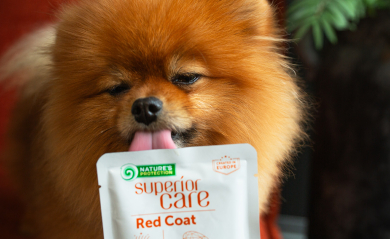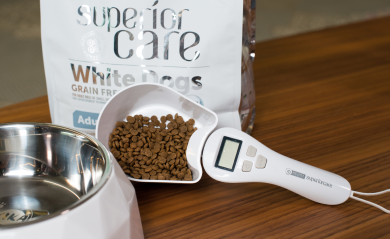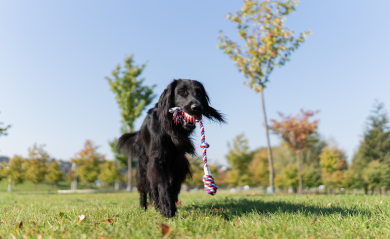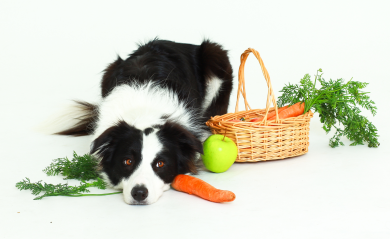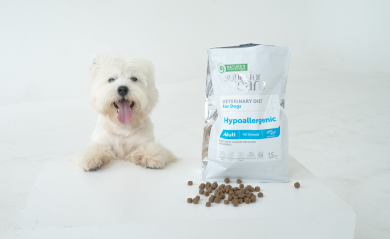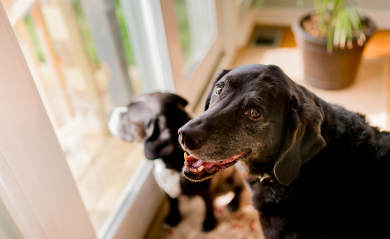Dog fur color fading. What causes this discoloration?
If you have noticed a change in your dog's fur color and are wondering why this happened or if the color will return to its original shade, don't fret. It's normal for a dog's fur color to change over time. However, it's important to investigate any changes in your dog's fur color, as it could indicate an underlying issue. To understand why this occurs, it's necessary to know what determines a dog's fur color and what factors can cause changes.
The amount of pigment in a dog's hair shafts, particularly in the guard hairs, determines its fur color. There are two main types of pigments that determine fur color: eumelanin and pheomelanin. Eumelanin produces black fur in dogs, while pheomelanin produces reddish-brown coat color. The concentration and distribution of these pigments in a dog's hair shafts vary depending on genetics and environmental factors, which ultimately determine a dog's coat color. However, most dogs have both eumelanin and pheomelanin in their coats.
Why may dogs start losing color in fur?
-
The role of genetics in determining coat color in dogs.
Genetics play a significant role in determining a dog's coat color and pattern. Breed-specific genes control the coat's color and pattern and can be passed down from generation to generation. For example, the gene that produces black coat color in Labrador Retrievers is distinct from the one that produces black coat color in Doberman Pinschers.
-
The effects of aging on a dog's coat color and texture.
As dogs age, changes in their coat color and texture are common. Aging can cause fur to turn gray or white, mainly around the muzzle and eyes. The decrease in melanin production, the pigment that gives fur its color, causes this change. Some dogs may also experience changes in coat texture, such as a coarser or wirier coat, as they age. However, sudden or drastic changes in coat color or texture should be evaluated by a veterinarian to rule out any potential health concerns.
-
Environmental factors - exposure to sunlight, diet, and chemicals.
Environmental factors can also play a role in changing a dog's coat color or texture. Exposure to sunlight, certain chemicals or pollutants, and diet can all affect a dog's coat. Prolonged exposure to sunlight can fade a dog's coat, particularly if the dog has light-colored fur. Certain ingredients in a dog's diet can also affect pigment production, which gives the coat its color. In some cases, environmental factors can interact with genetic factors to produce changes in coat color.
While changes in coat color due to environmental factors are generally temporary and not indicative of underlying health issues, sudden or dramatic changes in coat color should always be evaluated by a veterinarian. This is especially important when a dog has infections or allergies that could be causing these changes.
Does nutrition have an impact to coat color?
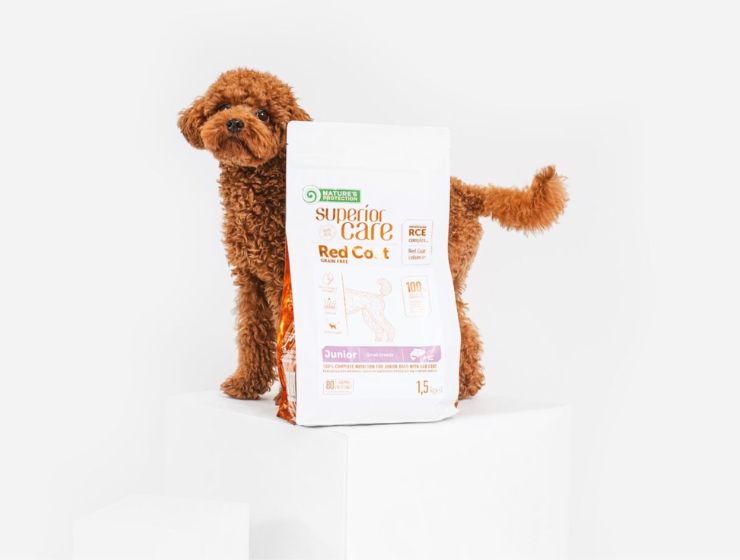
The impact of nutritional deficiencies on a dog's coat color can be significant, as it can cause changes in color and texture. Nutrient deficiencies such as zinc, copper, and essential fatty acids can lead to a dull, dry, or depigmented coat, or even cause itchiness and flakiness. Luckily, there are specially formulated dog foods available that can help address these deficiencies and support a healthy coat. For instance, Nature's Protection Superior Care Red Coat is a type of dog food that contains a blend of vitamins, minerals, and essential fatty acids that promote healthy skin and coat condition. This food also contains the RCE (Red Coat Enhancer) Complex, which is a blend of amino acids that stimulate the hair roots and increase color pigments in melanocyte cells. The amino acids cysteine, tyrosine, and methionine are responsible for feeding the coat color pigments eumelanin and pheomelanin. Feeding these amino acids through the Red Coat food promotes the natural pigment of the hair, acting as a food for melanocyte cells.
How to maintain a vivid coat color?
To maintain the coat color of a dog, there are various preventive measures that dog owners can take. The first step is to ensure that their pet is getting a nutritious and balanced diet, which is crucial since nutritional deficiencies can lead to a dull and faded coat color. A balanced nutrition consists of 80% dry food + 10-12% canned food + 3-5% treats + 1-3% supplements. In addition, grooming techniques and bathing with natural skin and coat care products can also help maintain the coat color by keeping the fur clean and healthy. Dogs with long hair may require more frequent grooming to avoid matting and tangling, which can affect their coat's appearance. It is also important to provide protection from the sun as excessive exposure can damage the hair and cause color fading. Regular vet checkups can help identify any underlying health issues that may be impacting the coat color. By taking these preventive measures, dog owners can help their pets maintain their coat color and overall health.
Is it possible to make the coat bright after losing color?
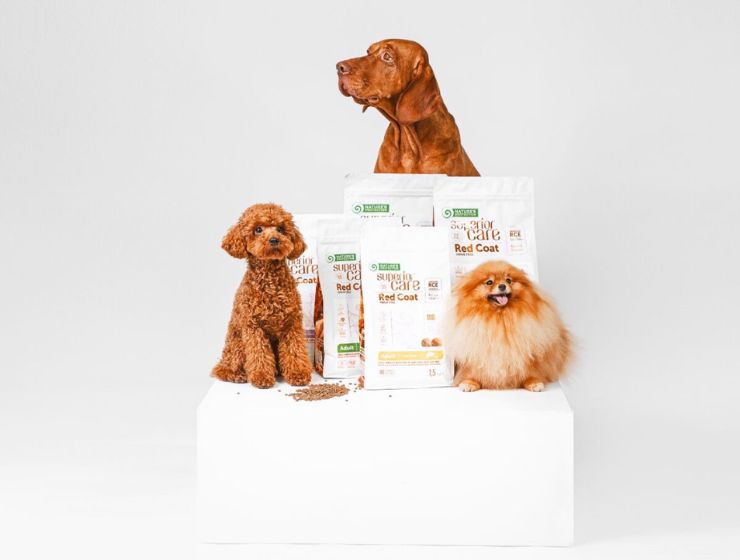
If a dog is already experiencing coat discoloration, identifying the underlying cause is crucial. If the discoloration is due to a nutritional deficiency, the best treatment is to adjust the dog's diet to include a balanced and nutrient-rich diet. One excellent option for dogs with coat discoloration is the Red Coat food line with RCE (Red Coat Enhancer) Complex. This complex contains amino acids that function in the hair roots and increase color pigments in melanocyte cells, which can help restore the coat's natural color.
Apart from dietary changes, there are other treatment options that can help address coat discoloration in dogs. One of these options is the use of grooming products, such as natural bathing products like Tauro Pro Line. These products can help to get rid of any buildup on the hair shafts and promote healthy hair growth.
Vitamins and minerals in the form of supplements can also be beneficial in restoring coat color. For example, omega-3 fatty acids are known to possess anti-inflammatory properties and can improve skin and coat health. Try out Nature’s Protection Salmon oil – a great source of natural, easily digestible Omega-3 and Omega-6 fatty acids.
However, it is essential to note that some underlying causes of coat discoloration may require medical treatment. If the discoloration is due to an underlying health condition like Cushing's disease or thyroid disorder, the vet may recommend medication or other treatments. In such cases, it is essential to collaborate with the vet to develop a tailored treatment plan for the dog's specific needs. In most cases, a combination of dietary adjustments and topical treatments can help to restore the dog's coat color and promote overall skin and coat health.
Coat color changes in dogs can be caused by various factors including genetics, aging, hormones, environment, and nutrition. It's important to monitor your dog's coat color and seek vet care for significant changes. Good nutrition is crucial for a healthy coat, but no single treatment can address all types of discoloration. A combination of prevention, diet, and targeted treatments may be needed. Maintaining a healthy coat can help your dog feel and look their best for a long and healthy life.


 July 18, 2023
July 18, 2023
 0 comments
0 comments



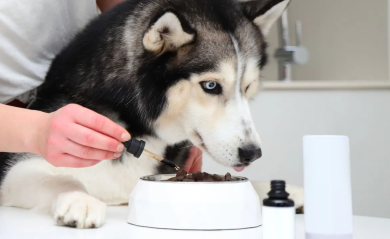
 March 26, 2025
March 26, 2025
